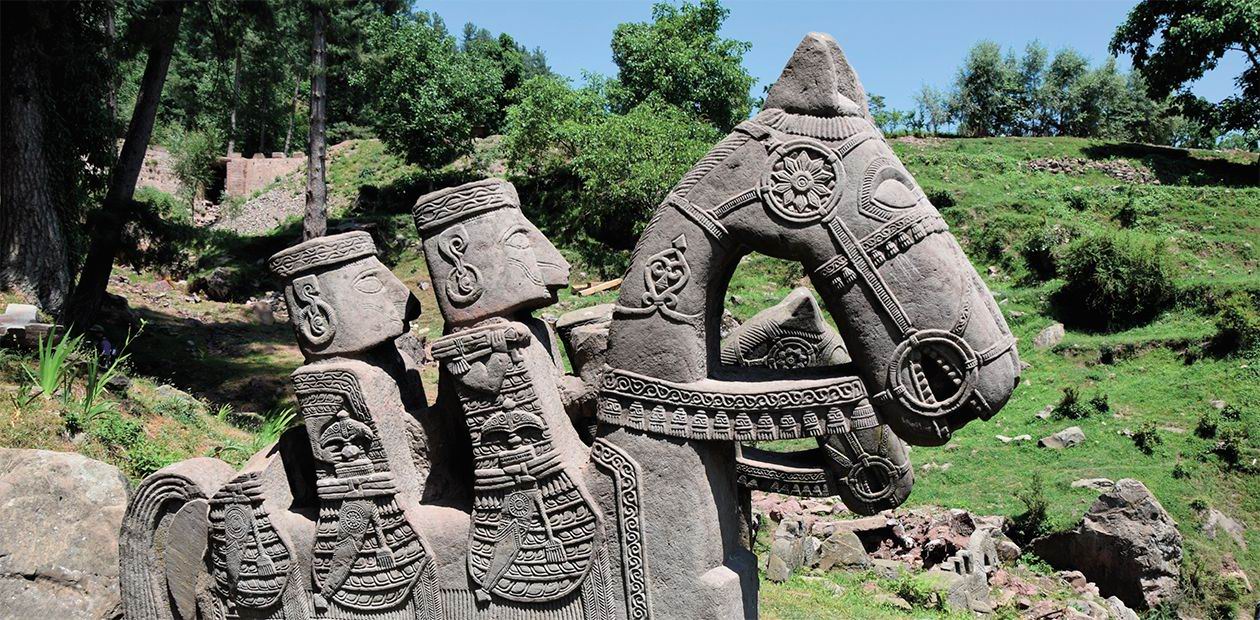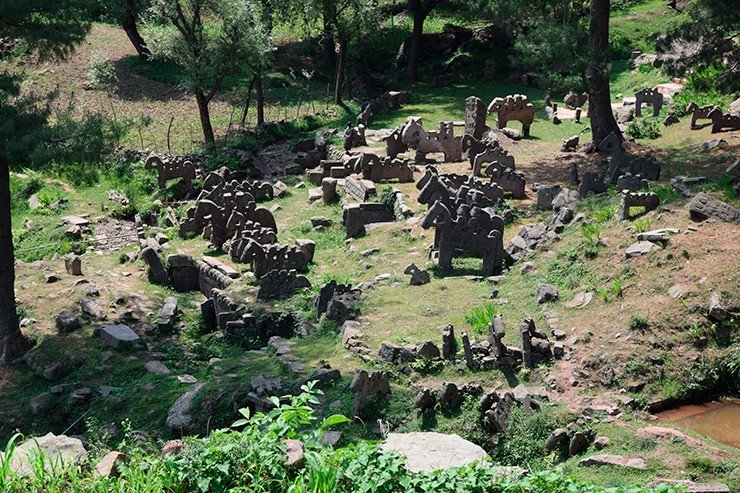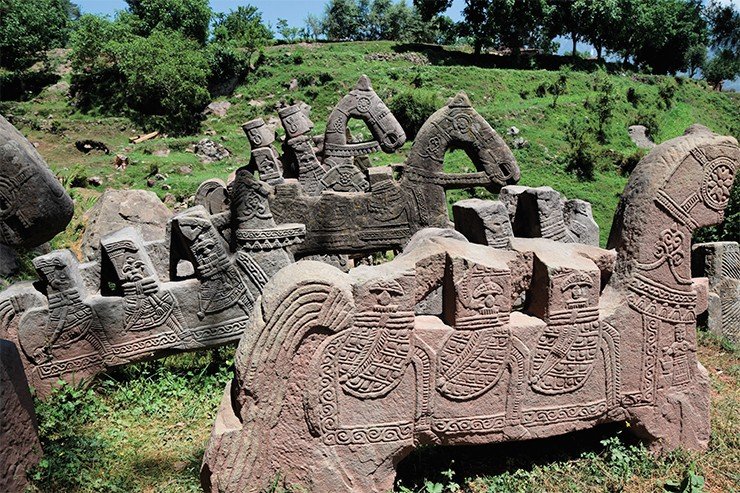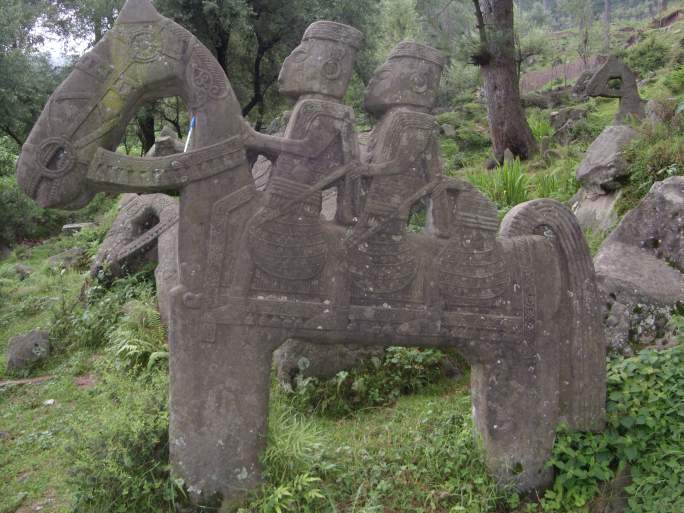Hephthalite Statues of Horsemen,
Gool, Jammu region, the State of Jammu and Kashmir, India, 5th-7th centuries


The Pir Panjal Range holds innumerable sculptures of horses and riders. One such place, located in the vicinity of the village of Gool, was turned into a kind of an open-air museum; some sculptures and flag-stones were brought from the adjacent fields. A lot of statues are broken; their fragments make part of alleys and walling around houses and fields. You can also find them in streams, where they are used for washing.
The most original part of these monuments are rock hewn depictions of horses bearing two, three or even four riders. Both the horses and equestrians are depicted in much detail, with carefully sculpted fittings of harness, clothes, ornaments and arms. At the same time, we are looking at a stylized or primitive type of art: all the proportions of the human body are distorted, as well as the proportions of the arms and harness. The lead rider has a cup in his left hand. (See a horseman and camel-rider with cup, on a painted tablet from Dandān-Uiliq at Khotan, Tarim Basin.) The statues, as we see it, date to the invasion and rule of the Hephthalites (5th – 7th cc. CE).
All the horsemen have tabular napes, which, in our opinion, reflects the anthropological feature of the population – ring, or occipital-frontal deformation. This kind of deformation was typical of Central Asian peoples in the 1st c. CE. (see clay statues in the Khaltchayan Reception Hall, Yuezhi north Bactria, 50 BC-50 AD.) In this region, the tradition was adopted by the nomads known under the umbrella term “Huns,” who spread it to Europe and India. The Hephthalite rulers’ coins show the same tabular napes and special shape of the skulls, which anthropologists attribute to an artificial deformity. (see Coins of Khingila, 1st Hephthalite King, 5th century AD)


 Front view of a horse |
 Horseman holding a cup |
 Rear view of a horseman |


Ghora Gali (The Horse Pass) sounds like the name of a specific place. But in Pir Panjal mountains of Jammu & Kashmir it is a generic term that indicates a fascinating feature that is a relic of a bygone time. Dotting the landscape in the most unexpected sites are countless (because nobody seems to have counted them so far!) striking sculptures of warhorses and horsemen that date back to an unknown age.
The horses are unfailingly found to be poised at some pass that lies on a foot or cart track.

Horsemen near Jamsalan village along Gool – Mahore road. This place is not connected by road and takes about an hour’s walk to reach. The blue tint is on account of the rainy mountain weather and also camera settings I forgot to change.
By Chalat Musafir
[Note the horse-armour? axe and bow.]